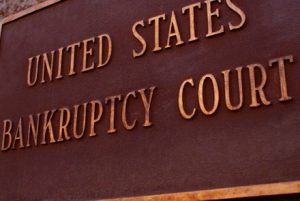 The United States Bankruptcy Code is designed to protect an overwhelmed debtor and give him a fresh start.
The United States Bankruptcy Code is designed to protect an overwhelmed debtor and give him a fresh start.
Chapter 7 of the Bankruptcy Code, also known as liquidation bankruptcy, is designed to relieve a debtor of all non-exempt assets in the process of discharging all non-priority debts. In other words, a debtor can discharge almost all debts, excluding, for example, most taxes, student loans, and domestic support obligations, but must turn over all non-exempt assets to the bankruptcy Trustee to sell and distribute to the debtor’s creditors.
Although the Bankruptcy Code is federal law, it relies on each state’s exemption laws to determine what property can be retained by a debtor. Utah’s exemptions laws allow a debtor to retain, for example, food storage, household furnishings, personal jewelry and heirlooms, work tools, retirement accounts, vehicle equity up to $2,500 ($5,000 for a couple), and home equity up to $20,000 ($40,000 for a couple).
The bankruptcy process begins with filling out and filing a petition with the Bankruptcy Court. Schedules are included with the petition which detail the debtor’s debts, assets, exemptions, income, and expenses. It is absolutely imperative the debtor is completely honest in filling out these schedules. Part of the bankruptcy Trustee’s job is to investigate a debtor’s claims and seek out hidden or concealed assets. A Trustee actually receives a portion of anything he finds, and therefore has a strong incentive to investigate a debtor’s schedules thoroughly. Also, being untruthful on the schedules is a federal crime that can lead to prosecution and federal prison if convicted.
Before a debtor files bankruptcy, he can convert non-exempt property into exempt property. This requires careful planning to ensure the debtor can keep as much of his property as possible. Also, at the time of filing, exemptions must be specifically claimed on the debtor’s schedules, otherwise they will not be applied and otherwise exempt property may be lost.
As part of the bankruptcy process a debtor is required to take two debtor courses, one prior to filing and one after filing the bankruptcy petition. Conveniently, these courses can be taken online. On the day of filing, an automatic stay goes into effect which requires all creditors to cease any collection activity. This includes staying any lawsuits against the debtor, collection actions, phone calls, or other contact regarding the debt.
Approximately 60 days after filing, a creditor’s meeting, called a 341 Hearing, will be held. This is an opportunity for the Trustee, and any creditors that desire to attend, to ask the debtor questions under oath. Generally, any questions asked will regard the debtor’s income, assets, and any issues they find with the bankruptcy petition. After the hearing, the Trustee can request further information if he desires.
If problems are found with the bankruptcy petition, the debtor may be allowed to amend his filing to correct them. However, if these problems are severe or amount to a violation of the Bankruptcy Code, the Trustee may dismiss the bankruptcy and possibly bar any refiling.
After the Trustee investigates the the debtor’s petition, sells any non-exempt assets, and distributes the proceeds to the debtor’s creditors, he can order a discharge of all remaining dischargeable debts and thereby successfully close the bankruptcy. This also imposes a permanent stay preventing any creditors from ever attempting to collect the discharged debts again.
As you can see, seeking bankruptcy protection is a complex process. The attorney’s at Slemboski & Tobler have helped debtors in all types of situations traverse the necessary paperwork and successfully negotiate a discharge. If you believe you can benefit from bankruptcy protection, please contact our office for a free initial consultation to discuss your specific case.
Also, if you would like to read more about the bankruptcy process, click here to view the complete Bankruptcy Code.